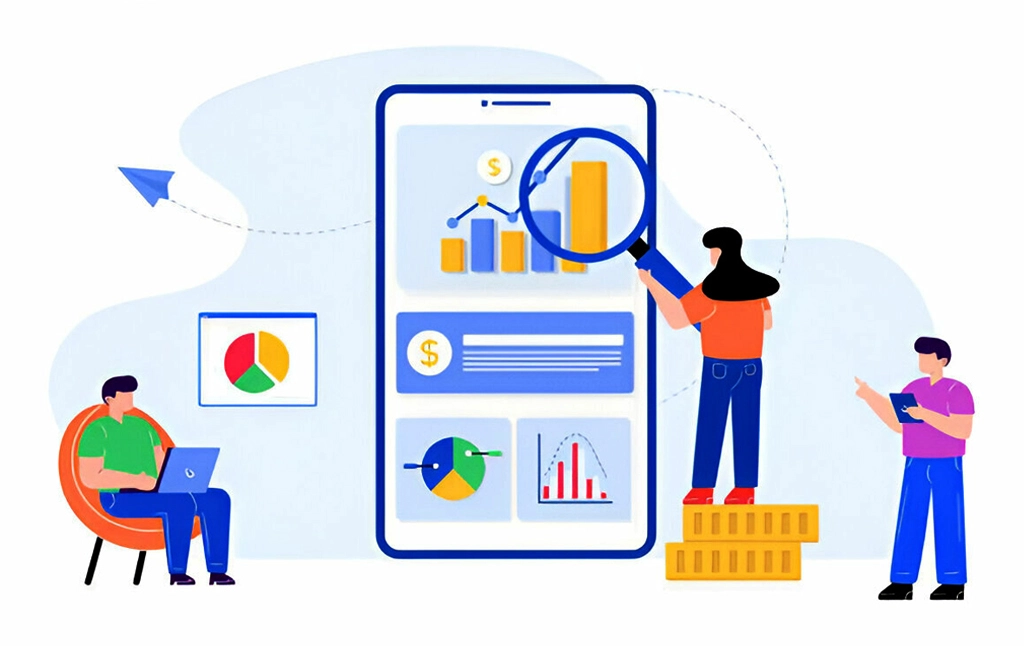patient, electronic health record, accessibility, medical billing, business process outsourcing, medical records indexing services, document, outsourcing, medical record, medical history, health insurance portability and accountability act, health insurance, health care provider, document management system, physician, information retrieval, organization, efficiency, medical classification, data security, revenue cycle management, regulatory compliance, health care, accounts receivable, productivity, research, optical character recognition, explanation of benefits, abstract, personal health record, demography, call center services, bpo services, workflow, expert, pricing, risk, automation, turnaround time, audit, revenue, data management, quality control, medication, machine learning, data collection, methodology, fax, protected health information, customer, healthcare industry, machine, chief information officer, records management, metadata, health information management, infrastructure, chart, disease, encryption, accounting, database, patent, diagnosis, medical transcription, data entry, slovakia, digitization, surgery, medical record indexing, sorting, medical billing medical, scalability, confidentiality, adherence, accounts payable, knowledge, medical research, patient satisfaction, analytics, information security, data analysis, identifier, injury, categorization, quality assurance, unique identifier, patient safety, intelligence, collaboration, contract
What does a medical indexer do?
A **medical indexer** is responsible for organizing and classifying medical information, such as research papers, clinical records, and other health-related documents. They assign relevant keywords, codes, and categories to ensure easy retrieval of data. Medical indexers typically work with medical databases, coding systems (like ICD-10 or CPT codes), and specialized software to create accurate and comprehensive indexes for healthcare professionals, researchers, and institutions. Their work is crucial for maintaining well-organized records, improving accessibility to medical information, and supporting efficient healthcare operations.
What is medical records indexing?
**Medical records indexing** is the process of organizing and categorizing medical records using a systematic approach to ensure easy retrieval and management of patient information. This involves assigning specific codes, keywords, or labels to documents, such as clinical notes, test results, diagnoses, and treatment histories, based on medical coding systems like ICD-10 or CPT.
The goal of medical records indexing is to make it easier for healthcare professionals to access relevant patient information quickly and accurately, improving the efficiency of medical care and record-keeping. It also ensures compliance with legal and regulatory standards for managing health data.
What is indexing in records management?
**Indexing in records management** is the process of organizing and categorizing records using a system that allows for easy identification, retrieval, and management. It involves creating a structured set of references or "indexes" to help locate records quickly, often based on key data points such as names, dates, numbers, or keywords.
In records management, indexing can be done manually or through electronic systems, and it plays a crucial role in maintaining an efficient filing system. Effective indexing ensures that records can be retrieved easily, supports compliance with legal and regulatory requirements, and enhances the overall efficiency of an organization's operations.
How is medical indexing accuracy ensured?
Ensuring accuracy in medical indexing involves several key practices:
1. **Standardized Coding Systems**: Using well-established medical coding systems, such as ICD-10, CPT, or SNOMED, ensures that medical information is categorized consistently and correctly. These systems provide clear definitions and classifications for diseases, treatments, and procedures.
2. **Training and Expertise**: Medical indexers undergo specialized training to understand medical terminology, coding systems, and healthcare practices. Their expertise ensures they can interpret and assign the correct codes and classifications to medical records.
3. **Quality Control Procedures**: Regular quality checks, reviews, and audits of indexed records help identify and correct errors. This may involve cross-referencing data with other sources or having multiple indexers verify the same records.
4. **Use of Technology**: Advanced indexing software and AI tools can assist in automating parts of the process, flagging potential errors, and suggesting accurate codes based on the context of the medical record.
5. **Collaboration with Healthcare Professionals**: Indexers often work closely with healthcare providers and clinical teams to ensure the accurate representation of medical information. Feedback and clarification from these professionals help prevent misinterpretation.
6. **Continuous Updates**: Medical indexing practices must be regularly updated to reflect changes in medical terminology, coding standards, and healthcare regulations to maintain accuracy and compliance.
By combining expert knowledge, standardized systems, quality controls, and technology, the accuracy of medical indexing is maintained and improved.
What software aids medical record indexing?
Several software solutions aid in **medical record indexing**, helping healthcare organizations streamline the process and ensure accuracy. Some commonly used software includes:
1. **3M Health Information Systems**: Offers solutions like the 3M CodeFinder Software and 3M ChartScan that assist in accurate coding, indexing, and classification of medical records, using advanced algorithms to match codes with clinical documentation.
2. **TruCode Encoder**: Provides clinical coding and indexing solutions for hospitals, ensuring precise and efficient coding of diagnoses, procedures, and medical conditions.
3. **Cerner PowerChart**: A comprehensive electronic health record (EHR) system with built-in indexing capabilities that enable users to organize and retrieve patient records quickly and accurately.
4. **Epic Systems**: Another leading EHR platform that helps with medical indexing, offering tools for organizing patient records, managing codes, and streamlining the process of document retrieval.
5. **Optum360**: Provides coding, indexing, and documentation services with tools that enhance accuracy and efficiency in managing health records and medical billing.
6. **Nuance PowerScribe**: Specializes in speech recognition and natural language processing, assisting in the accurate indexing and classification of medical records based on dictations from healthcare providers.
7. **Meditech**: An EHR system offering features for document management, medical record indexing, and efficient retrieval of patient data in clinical environments.
8. **Kareo**: A cloud-based EHR software that offers tools for indexing and organizing patient records, streamlining administrative processes in small to medium healthcare practices.
These software systems automate and assist in the indexing process, improving accuracy, efficiency, and compliance in managing medical records.
Are there certifications for medical indexers?
Yes, there are certifications for **medical indexers** to validate their skills and knowledge in medical coding, indexing, and health information management. Some of the key certifications include:
1. **Certified Coding Specialist (CCS)**: Offered by the American Health Information Management Association (AHIMA), this certification is widely recognized and focuses on coding and indexing medical records accurately.
2. **Certified Professional Coder (CPC)**: Administered by the American Academy of Professional Coders (AAPC), the CPC certification is for professionals who work with coding and indexing patient records in various healthcare settings.
3. **Certified Health Information Technician (CHIT)**: Another certification from AHIMA, it is designed for professionals who specialize in managing health information systems, including indexing and coding.
4. **Certified Documentation Expert (CDE)**: This certification focuses on ensuring proper documentation practices, which are essential for accurate medical record indexing.
5. **Certified in Health Information Management (CHIM)**: This certification is for professionals in health information management, encompassing medical record indexing, coding, and data management.
6. **Certified Medical Reimbursement Specialist (CMRS)**: Offered by the American Medical Billing Association (AMBA), this certification ensures proficiency in coding and indexing for reimbursement purposes.
These certifications help medical indexers demonstrate their expertise, adhere to industry standards, and stay updated on the latest practices in medical coding and indexing.
How does indexing improve patient care?
**Indexing** improves patient care by ensuring that medical records are organized, accessible, and accurate, which leads to several benefits:
1. **Quick Access to Patient Information**: Properly indexed medical records allow healthcare providers to quickly retrieve critical information, enabling faster diagnosis and treatment decisions.
2. **Accurate Diagnosis and Treatment**: Indexing ensures that patient data, such as diagnoses, medications, and past treatments, are correctly categorized. This reduces the risk of errors and enhances decision-making, leading to more accurate treatments.
3. **Improved Coordination of Care**: When patient records are well-indexed, it’s easier for multiple healthcare providers (doctors, specialists, pharmacists, etc.) to collaborate and access the same information, ensuring consistent and coordinated care.
4. **Compliance with Regulations**: Accurate indexing helps healthcare providers comply with regulatory standards, such as HIPAA (in the U.S.), which ensures patient privacy and data security, fostering trust in the healthcare system.
5. **Better Tracking of Medical History**: Indexed records make it easier to track a patient's medical history over time, including past procedures, allergies, and chronic conditions, which helps in providing personalized care.
6. **Streamlined Workflow**: Healthcare professionals can spend less time searching for records and more time focusing on patient care, leading to better efficiency and productivity.
7. **Data-Driven Decision Making**: Well-indexed records provide data that can be analyzed for trends, helping healthcare institutions improve practices, predict patient needs, and enhance overall care quality.
By improving accessibility, accuracy, and coordination, indexing plays a key role in enhancing the quality of patient care.
What challenges do medical indexers face?
Medical indexers face several challenges in their work, including:
1. **Complexity of Medical Terminology**: Medical language is highly specialized and constantly evolving, requiring indexers to stay updated and accurately understand complex terms, treatments, and conditions.
2. **Keeping Up with Coding Systems**: Indexers must be familiar with multiple coding systems like ICD-10, CPT, and SNOMED. These systems are frequently updated, and changes can be difficult to keep track of.
3. **Volume of Data**: With the increasing amount of patient data being generated, medical indexers are required to process and categorize large volumes of records, which can be time-consuming and overwhelming.
4. **Maintaining Accuracy**: Small errors in indexing can lead to incorrect patient records, misdiagnoses, and billing issues. Ensuring accuracy under tight deadlines can be a major challenge.
5. **Data Privacy and Compliance**: Medical indexers must adhere to strict privacy regulations, such as HIPAA in the U.S. or GDPR in Europe, to protect sensitive patient information, which can complicate the indexing process.
6. **Integration with Other Systems**: Medical indexing often requires integration with electronic health record (EHR) systems and other technologies. Ensuring compatibility and smooth data flow between different platforms can be challenging.
7. **Time Sensitivity**: In healthcare, timely access to accurate medical records is crucial. Indexers must work efficiently to meet deadlines and ensure that records are indexed in a timely manner.
8. **Subjectivity in Classification**: Some medical terms and diagnoses may have multiple interpretations, and indexers must make subjective decisions when assigning codes, which can lead to inconsistencies.
9. **Training and Certification Requirements**: Medical indexers need ongoing training to stay up-to-date with the latest coding and indexing practices. Obtaining and maintaining certifications can be demanding.
By addressing these challenges through continuous education, advanced technology, and quality control measures, medical indexers can improve their efficiency and accuracy in supporting healthcare operations.
Can indexing reduce healthcare administrative costs?
Yes, **indexing** can significantly reduce healthcare administrative costs in several ways:
1. **Faster Record Retrieval**: Properly indexed medical records make it easier and faster for healthcare providers to access patient information, reducing the time spent searching for records and improving workflow efficiency.
2. **Improved Accuracy**: Accurate indexing ensures that patient data, diagnoses, treatments, and codes are correctly categorized, which helps reduce errors and the need for rework or corrections. This leads to fewer billing errors, reduced claim rejections, and fewer administrative resources spent on fixing mistakes.
3. **Optimized Resource Allocation**: With better-organized records, healthcare staff can allocate time and resources more effectively, reducing redundant tasks and administrative overhead associated with managing records manually.
4. **Compliance Efficiency**: Indexed medical records help healthcare organizations stay compliant with regulatory standards like HIPAA, reducing the risk of costly fines and penalties associated with non-compliance.
5. **Reduced Paperwork**: Digital indexing reduces the reliance on physical paperwork and filing systems, lowering storage and physical infrastructure costs, while also reducing the environmental impact.
6. **Streamlined Billing and Coding**: Accurate indexing of medical records supports better coding and billing processes, leading to fewer delays in reimbursement and reduced administrative costs related to billing disputes.
7. **Data-Driven Decision Making**: Efficient data indexing enables healthcare administrators to analyze trends and optimize operational strategies, helping reduce unnecessary administrative expenses.
By improving organization, efficiency, and accuracy, indexing helps healthcare organizations streamline their operations and reduce the overall cost of administrative tasks.
What security measures protect indexed records?
Security measures that protect **indexed records** in healthcare and other sectors are crucial to safeguarding sensitive information. These measures include:
1. **Encryption**: Both during transmission and while at rest, indexed records are often encrypted to ensure that unauthorized individuals cannot access the data. Encryption protects sensitive patient or organizational information from being intercepted or exposed.
2. **Access Control**: Strict access controls are enforced to limit who can view or modify indexed records. Role-based access ensures that only authorized personnel (e.g., medical staff, record clerks) can access certain types of data, based on their responsibilities.
3. **Multi-Factor Authentication (MFA)**: MFA adds an extra layer of security by requiring more than one form of verification (such as a password and a biometric scan) to access indexed records. This helps prevent unauthorized access even if login credentials are compromised.
4. **Audit Trails**: Detailed audit logs track every action taken on the indexed records, including who accessed, modified, or shared the data. This helps identify any suspicious activities and provides accountability.
5. **Data Masking and Redaction**: Sensitive information (such as patient names or social security numbers) can be hidden or replaced with masked values in specific instances of access, ensuring that unauthorized users cannot view full details of the data.
6. **Backup and Disaster Recovery**: Indexed records are regularly backed up and stored securely, ensuring that they can be recovered in the event of a cyberattack, system failure, or other data loss incidents. This reduces the risk of losing valuable information.
7. **Secure Servers and Cloud Storage**: Indexed records are stored on secure servers or cloud-based systems with high security standards. These platforms use advanced security protocols, such as firewalls and intrusion detection systems, to protect data from unauthorized access.
8. **Compliance with Data Protection Regulations**: Indexed records in healthcare are often subject to regulations like HIPAA (Health Insurance Portability and Accountability Act) or GDPR (General Data Protection Regulation), which mandate strict security standards for data handling and privacy.
9. **Employee Training**: Regular training for staff on data privacy, security best practices, and phishing prevention ensures that all personnel handling indexed records are aware of the latest security threats and how to mitigate them.
By implementing these security measures, healthcare organizations and other industries can ensure that indexed records remain protected from unauthorized access, data breaches, and other security risks.
How often should records be re-indexed?
The frequency of **re-indexing records** depends on several factors, including the nature of the records, industry requirements, and the organization's needs. However, general guidelines include:
1. **Regulatory Requirements**: In some industries, such as healthcare or finance, regulations may require records to be re-indexed periodically to ensure compliance with updated standards or to ensure data accuracy.
2. **System Updates and Changes**: When new coding systems, classification standards, or technologies are introduced (such as changes in ICD codes or new billing codes), records may need to be re-indexed to maintain consistency and compliance.
3. **Data Updates**: If new information is added to existing records (e.g., updates to patient history or new procedures), re-indexing ensures that the records are properly categorized and that all relevant details are included.
4. **Quality Control**: Regular re-indexing, often annually or semi-annually, can help identify errors or outdated indexing practices, ensuring that records are consistently organized for easy retrieval.
5. **System Overhauls or Upgrades**: If an organization switches to a new electronic health record (EHR) system or records management system, re-indexing may be required to integrate the old records into the new platform.
6. **Volume of Records**: In organizations with high volumes of records, re-indexing may be needed more frequently to accommodate the growing amount of data and maintain system performance.
In general, while **periodic re-indexing** is advisable (such as annually or as changes occur), the frequency can vary depending on operational needs, industry standards, and the complexity of the records being managed. Regular audits and system reviews can also help determine when re-indexing is necessary.
What role does AI play in indexing?
**AI** plays an increasingly important role in **indexing**, particularly in managing large volumes of data, improving accuracy, and increasing efficiency. Key roles AI plays in indexing include:
1. **Automated Categorization**: AI algorithms can analyze medical records, documents, and other data sources, automatically assigning appropriate tags, keywords, and categories to records. This reduces the manual effort required for indexing and improves consistency.
2. **Natural Language Processing (NLP)**: AI-powered NLP allows systems to understand and interpret unstructured data in documents, such as clinical notes or research papers. This enables automatic extraction of relevant information (e.g., diagnoses, treatment details) and categorization based on context.
3. **Error Detection and Quality Control**: AI tools can flag potential indexing errors, such as misclassifications or missing codes, by comparing indexed records to predefined standards or historical data. This helps improve the accuracy of indexed records.
4. **Data Enrichment**: AI can enhance indexed records by cross-referencing them with external databases or sources, enriching the records with more context or up-to-date information, such as new medical conditions, treatments, or coding updates.
5. **Scalability**: AI can handle large volumes of data efficiently, allowing for faster indexing of records in organizations with significant amounts of incoming information. This scalability ensures that systems can keep up with growing data needs without sacrificing accuracy.
6. **Improving Searchability**: AI enhances the ability to search and retrieve indexed records by understanding the intent behind search queries and returning more accurate results, even if users use different terminology or phrasing.
7. **Predictive Indexing**: AI can predict future categorization needs based on trends and patterns in existing data. This helps anticipate changes in medical coding, classification standards, or patient record management and prepares indexing systems accordingly.
By integrating AI into the indexing process, organizations can streamline workflows, reduce manual errors, and ensure that records are indexed quickly and accurately, ultimately improving operational efficiency and data accessibility.
How does indexing affect health data analysis?
**Indexing** plays a critical role in **health data analysis** by organizing and structuring medical records, making it easier to access and analyze data. The impact of indexing on health data analysis includes:
1. **Improved Data Accessibility**: Well-indexed records ensure that health data is organized, categorized, and easily searchable. This improves the ability to retrieve relevant information for analysis, such as patient demographics, medical history, diagnoses, and treatments.
2. **Data Accuracy**: Accurate indexing helps ensure that health data is properly categorized, reducing the chances of errors or misinterpretation during analysis. This leads to more reliable and trustworthy insights for decision-making.
3. **Faster Data Retrieval**: Indexing allows healthcare analysts to quickly access and aggregate data, speeding up the process of health data analysis. This is especially important in large datasets where manually searching through unorganized data can be time-consuming.
4. **Trend Identification**: Properly indexed data helps in the identification of trends or patterns in patient outcomes, treatment efficacy, or disease prevalence. These insights can guide healthcare providers in improving patient care and developing more targeted treatments.
5. **Predictive Analytics**: With indexed data, AI and machine learning algorithms can analyze patterns and predict patient outcomes, such as the likelihood of disease progression or treatment success. This helps in proactive decision-making.
6. **Data Integration**: Indexing ensures that data from different sources (e.g., electronic health records, lab results, or imaging reports) can be integrated seamlessly, enabling a more comprehensive analysis of a patient's health and treatment history.
7. **Regulatory Compliance**: Indexed health data makes it easier to meet compliance requirements (e.g., HIPAA, GDPR), ensuring that data is organized and accessible in ways that meet legal and regulatory standards, while protecting patient privacy.
8. **Support for Research**: Researchers rely on indexed health data to conduct studies, analyze large populations, and explore correlations between medical conditions, treatments, and outcomes. Accurate indexing facilitates efficient data extraction for research purposes.
In summary, **indexing** enhances the efficiency, accuracy, and scalability of **health data analysis**, enabling better insights into patient care, healthcare trends, and operational efficiency.
What are common indexing standards in healthcare?
In healthcare, there are several **indexing standards** that help organize and categorize medical records, making it easier to manage, retrieve, and analyze patient information. Some common indexing standards include:
1. **ICD-10 (International Classification of Diseases, 10th Edition)**: Used globally, ICD-10 is a coding system for diseases, conditions, and external causes of injury. It helps index and classify patient diagnoses and health conditions for accurate documentation, billing, and statistical analysis.
2. **CPT (Current Procedural Terminology)**: A standardized system developed by the American Medical Association (AMA), CPT codes are used to index and categorize medical procedures, services, and treatments provided by healthcare professionals. This is essential for billing and reimbursement purposes.
3. **SNOMED CT (Systematized Nomenclature of Medicine—Clinical Terms)**: A comprehensive clinical terminology that provides a standardized way to index and classify medical terms, including diseases, findings, procedures, medications, and other healthcare-related concepts. It facilitates interoperability and data sharing across healthcare systems.
4. **LOINC (Logical Observation Identifiers Names and Codes)**: LOINC is used to standardize the indexing of laboratory tests and clinical observations. It helps ensure that test results and other diagnostic information are consistently documented and categorized.
5. **HL7 (Health Level Seven)**: HL7 standards focus on the exchange, integration, sharing, and retrieval of electronic health information. It includes standards for coding and indexing health data, such as medical records, to ensure smooth interoperability between different healthcare systems.
6. **ICD-11**: The 11th version of the International Classification of Diseases, which is the successor to ICD-10, aims to be more comprehensive and adaptable to modern healthcare systems. While ICD-11 is gradually being adopted, it is poised to become a primary standard for indexing health data.
7. **NDC (National Drug Code)**: Used primarily in the U.S., NDC is a standard for indexing and categorizing drugs and medications, facilitating the management of pharmaceutical data, including prescription and over-the-counter medications.
8. **RxNorm**: A system developed by the U.S. National Library of Medicine, RxNorm standardizes the naming and indexing of medications, allowing consistent communication about drugs and their ingredients across healthcare systems.
9. **ICF (International Classification of Functioning, Disability, and Health)**: A World Health Organization (WHO) standard, ICF is used for indexing and classifying the functional aspects of a patient's health, including their ability to perform activities of daily living and manage disabilities.
These **indexing standards** ensure consistent and accurate classification, retrieval, and analysis of healthcare data, facilitating better patient care, interoperability, and compliance with regulations.
How do indexers handle sensitive health information?
Indexers handling sensitive health information must adhere to strict security protocols and ethical guidelines to protect patient privacy and ensure compliance with healthcare regulations. Here's how indexers manage sensitive health information:
1. **Data Encryption**: Sensitive health information, both at rest and in transit, is encrypted to protect it from unauthorized access. This ensures that even if the data is intercepted or accessed without permission, it remains unreadable.
2. **Compliance with Privacy Regulations**: Indexers must comply with privacy laws like **HIPAA** (Health Insurance Portability and Accountability Act) in the U.S., which sets standards for the protection of patient information. They ensure that all data indexing and storage practices are in line with these regulations.
3. **Role-Based Access Control (RBAC)**: Access to sensitive health information is restricted based on roles and responsibilities. Only authorized personnel (e.g., doctors, medical coders, or indexers) are allowed to access or modify specific patient data.
4. **Confidentiality Agreements**: Indexers are often required to sign confidentiality agreements as part of their employment, emphasizing their obligation to protect patient information from unauthorized disclosure.
5. **Secure Workstations and Systems**: Indexers work on secure systems with firewalls, anti-virus protection, and other security measures in place to safeguard data. These systems are also regularly updated to protect against new threats.
6. **Audit Trails**: Comprehensive audit logs track all actions taken on sensitive health records. This includes who accessed or modified a record, when the action occurred, and what changes were made. These logs provide accountability and help detect unauthorized access.
7. **Anonymization and Redaction**: In some cases, sensitive information may be anonymized or redacted for analysis, research, or training purposes. This reduces the risk of exposing identifiable patient details while still allowing for useful data analysis.
8. **Data Minimization**: Indexers are trained to index only the necessary data, avoiding over-collection of personal health information. This reduces the amount of sensitive data that needs to be stored and protected.
9. **Regular Training and Awareness**: Indexers receive ongoing training on data privacy laws, secure data handling practices, and the potential risks to sensitive information. This helps them stay updated on best practices for safeguarding health records.
10. **Secure Communication Channels**: When sharing health information (e.g., for collaboration or transfer), indexers use secure communication channels such as encrypted emails or protected portals to ensure the data remains confidential.
By following these practices, indexers play a vital role in ensuring that sensitive health information is managed securely and in compliance with regulations, thus protecting patient privacy and maintaining trust in the healthcare system.
Whats the future of medical records indexing?
The future of medical records indexing will focus on automation, AI, and interoperability. AI and machine learning will enable smarter data extraction and indexing, while blockchain will ensure security and transparency. Cloud-based solutions will streamline data storage, and voice recognition will speed up documentation. Interoperability standards will make records easier to share across systems. Patient-managed records will increase engagement, and wearable devices will integrate real-time health data. Enhanced data privacy and compliance features will address security concerns, making indexing more efficient and patient-centered.
How does indexing support medical research?
Indexing supports medical research by organizing and structuring large volumes of health data, making it easier to access, analyze, and interpret. Here’s how:
1. **Efficient Data Retrieval**: Indexed medical records allow researchers to quickly find relevant patient data, such as diagnoses, treatments, and outcomes, without manually sifting through unstructured data. This speeds up literature reviews and data mining for research.
2. **Data Organization**: Indexing categorizes medical information (e.g., diagnoses, medications, procedures), which aids in grouping similar cases or conditions. This structured format enables researchers to identify trends, patterns, and correlations more easily.
3. **Improved Data Sharing**: Well-indexed data is easier to share across research teams and institutions. Standardized indexing, such as using the HL7 FHIR format, supports interoperability, allowing researchers to access diverse datasets from various sources for more comprehensive studies.
4. **Big Data Analysis**: Indexed records are crucial for handling big data in medical research. They enable efficient use of advanced analytics, like machine learning and AI, to identify new insights, predict outcomes, or discover novel treatments.
5. **Longitudinal Studies**: With accurate indexing, researchers can track patient data over time, supporting longitudinal studies that analyze disease progression, treatment effectiveness, or long-term outcomes.
6. **Genomic Research**: Indexed records can integrate genomic data, allowing researchers to correlate genetic factors with clinical outcomes, paving the way for personalized medicine.
In short, indexing makes medical data more accessible, organized, and usable, enhancing the efficiency and depth of medical research.
Whats the difference between indexing and coding?
**Indexing** and **coding** are both processes used to organize and categorize medical information, but they serve different purposes and involve distinct methods:
### **Indexing**
- **Purpose**: Indexing involves creating a structured system that organizes medical records for easy retrieval and reference. It typically focuses on categorizing information based on topics, conditions, or procedures.
- **Method**: It involves identifying and listing key concepts, terms, and references from medical records. Indexing often uses keywords or terms to index documents, and these terms are usually grouped by categories or subjects (e.g., diseases, treatments).
- **Outcome**: The result of indexing is a system that enables quick access to related information across large databases. Indexed records may include multiple types of data, such as diagnoses, medications, and clinical notes, arranged in an easily searchable format.
### **Coding**
- **Purpose**: Coding is the process of assigning a specific alphanumeric code to a medical diagnosis, procedure, or service for standardized documentation and billing purposes.
- **Method**: Codes are typically based on standardized classification systems such as ICD-10 (for diagnoses), CPT (for procedures), or HCPCS (for healthcare services). Medical coders review clinical documentation to assign the correct code to each condition or procedure.
- **Outcome**: The outcome of coding is the precise representation of a patient's medical conditions and treatments through a standardized code, which is used for billing, insurance claims, statistical reporting, and regulatory compliance.
### Key Differences:
- **Purpose**: Indexing organizes information for easy retrieval, while coding standardizes and quantifies medical data for administrative purposes.
- **Focus**: Indexing focuses on categorizing and referencing information, whereas coding focuses on translating medical terms into standardized codes.
- **Outcome**: Indexing results in a searchable structure for information, while coding results in numerical or alphanumeric codes used in billing and reporting.
Both processes are vital to the healthcare system, supporting data organization, research, reimbursement, and regulatory compliance.
How do indexers ensure data interoperability?
Indexers ensure data interoperability by using standardized coding systems like ICD, SNOMED CT, and LOINC to represent medical terms consistently. They follow data exchange standards like HL7 FHIR, which allow seamless sharing across different systems. Indexers also map and cross-reference data from different platforms, ensure consistent data formats, and harmonize data for compatibility. They collaborate with IT experts and ensure compliance with privacy regulations like HIPAA, making sure data is shared securely and accurately across healthcare systems.
medical records organization and indexing service, medical records indexing services, medical record indexing, healthcare document indexing, electronic medical records, EMR indexing services, healthcare data management, medical records organization, patient record management, hospital record indexing, medical records outsourcing, healthcare data solutions, secure medical records, medical indexing software, medical data retrieval, medical information indexing, EHR indexing services, medical record digitization, HIPAA-compliant indexing, patient data indexing, medical record storage, healthcare information indexing, medical record accuracy, indexing medical reports, medical data entry services, healthcare record maintenance, clinical record indexing, patient data organization, medical transcription indexing, healthcare document management, medical archive solutions, automated medical indexing, digitized patient records, medical record filing, healthcare record digitization, indexed patient records, medical data solutions, electronic health record indexing, medical record processing, secure patie, t data, medical file indexing, healthcare record retrieval, hospital data indexing, EMR organization solutions, streamlined record indexing, medical file management, digital healthcare records, patient document indexing, clinical documentation services, healthcare data accuracy, health record management services, medical record services., ai medical records sorting and indexing services, ai medical records sorting and indexing, medical sorting and indexing, sorting index medical records






